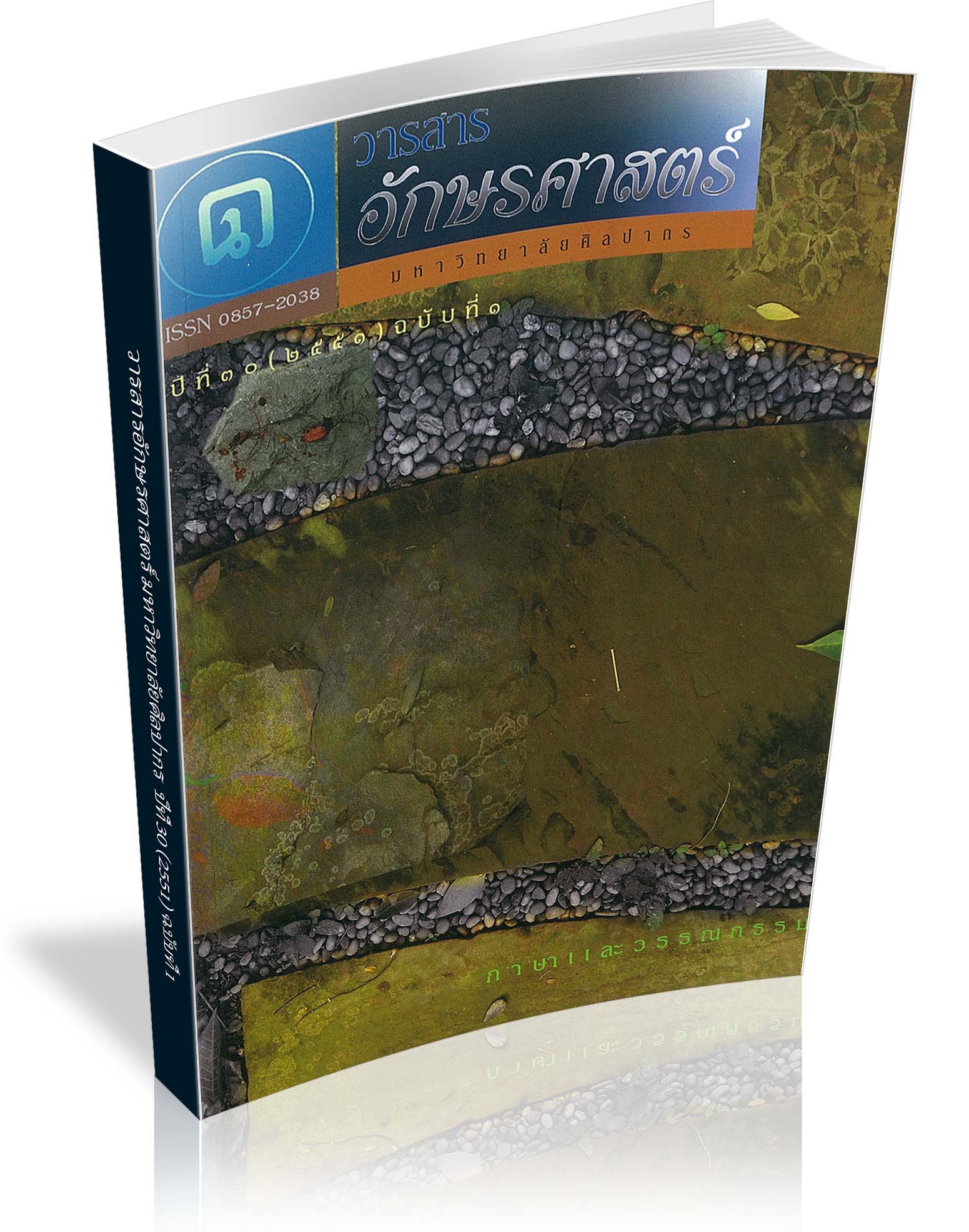Translation of Classical Chinese Conjunctions into Thai
Keywords:
การแปลคำเชื่อม, ภาษาจีนโบราณAbstract
The purpose of this research is to study the translation of 20 commonly used Classical Chinese conjunctions in Thai. The data were collected from pre – Qin and Han texts. The research found that Classical Chinese conjunctions can be translated into many Thai equivalents depending on the context; but some conjunctions have no Thai equivalents due to the differences in syntax and semantics between the two languages. To decode the meanings of the conjunctions in the source text, a translator requires thorough knowledge about syntax and semantics of classical Chinese. In addition, the translator needs to know the semantic relation between sentences in the source language and also needs the same in – depth knowledge to reencode their meanings into Thai.
Downloads
References
ดวงตา สุพล. ทฤษฎีและกลวิธีการแปล. กรุงเทพฯ : คณะอักษรศาสตร์ จุฬาลงกรณ์มหาวิทยาลัย, ๒๕๓๓.
ดุษฎีพร ชํานิโรคศานต์. “อนุพากย์ในภาษาไทย”. วิทยานิพนธ์ปริญญามหาบัณฑิต แผนกวิชาภาษาไทย คณะอักษรศาสตร์ จุฬาลงกรณ์มหาวิทยาลัย, ๒๕๑๒.
นววรรณ พันธุเมธา. ไวยากรณ์ไทย. กรุงเทพฯ : รุ่งเรืองสาส์นการพิมพ์, ๒๕๒๗.
ประพิณ มโนมัยวิบูลย์. ไวยากรณ์จีนกลาง. กรุงเทพฯ : โรงพิมพ์แห่งจุฬาลงกรณ์มหาวิทยาลัย, ๒๕๔๕.
ปรีชา ช้างขวัญยืน. “การใช้ภาษาร้อยแก้วในภาษาไทยสมัยอยุธยา”. วิทยานิพนธ์ปริญญามหาบัณฑิต แผนกวิชาภาษาไทย คณะอักษรศาสตร์ จุฬาลงกรณ์มหาวิทยาลัย, ๒๕๑๕.
วรรณา แสงอร่ามเรือง. ทฤษฎีและหลักการแปล. กรุงเทพฯ : โรงพิมพ์แห่งจุฬาลงกรณ์มหาวิทยาลัย, ๒๕๔๒.
Downloads
Published
How to Cite
Issue
Section
License
ผู้เขียนบทความต้องยินยอมในข้อกำหนดต่าง ๆ ของวารสารก่อนส่งบทความตีพิมพ์




